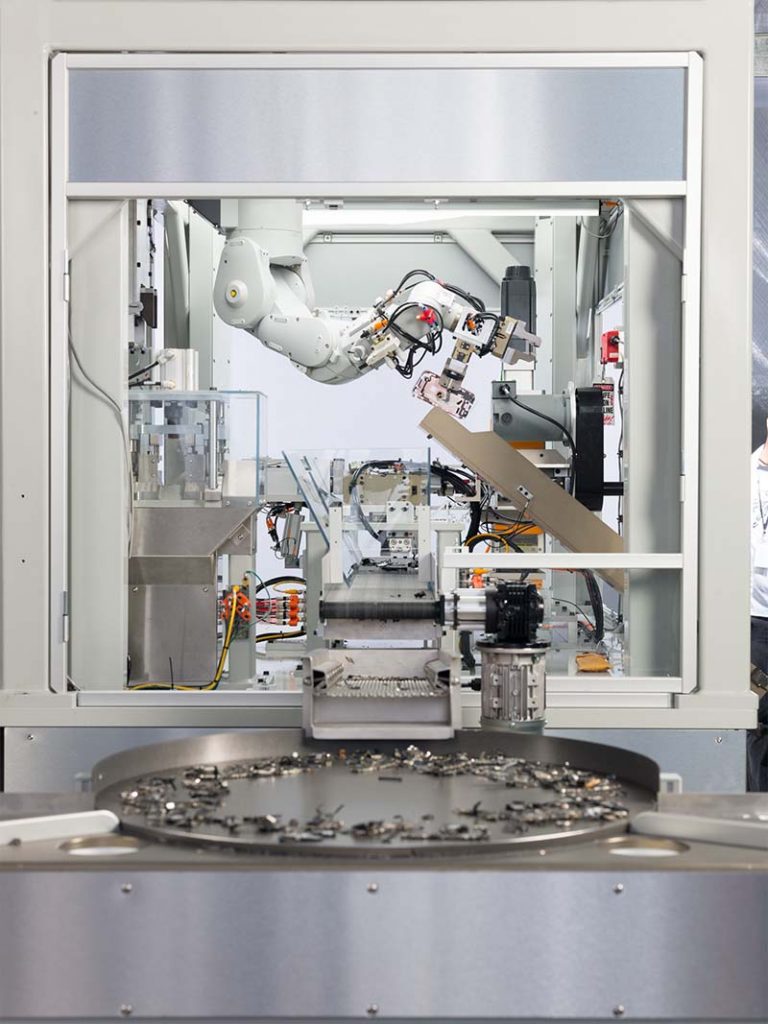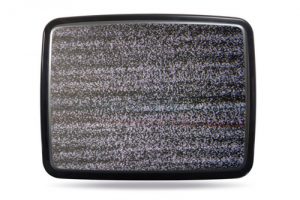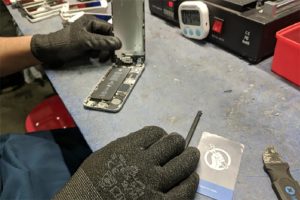The U.S. EPA solid waste chief during the Obama Administration is now helping to push forward circular economy principles, and some of his work could help reshape electronics recovery in developing areas of the world.

The U.S. EPA solid waste chief during the Obama Administration is now helping to push forward circular economy principles, and some of his work could help reshape electronics recovery in developing areas of the world.
 An online marketplace for refurbished devices has expanded into the U.S., and company leaders are looking for refurbishers to join the platform.
An online marketplace for refurbished devices has expanded into the U.S., and company leaders are looking for refurbishers to join the platform.

Daisy, Apple’s new device disassembly robot, can dismantle up to 200 devices per hour.
When it comes to in-house recycling, Apple is diving deeper into droids.
 Shuttered CRT processor Nulife Glass continues to wade through a lengthy and costly cleanup of its East Coast operations.
Shuttered CRT processor Nulife Glass continues to wade through a lengthy and costly cleanup of its East Coast operations.

A two-year study has highlighted key details about e-scrap exports to Nigeria, including the different device types entering the country, methods used to ship them and countries of origin.

Scott Vander Kooy, president of Comprenew, signs a contract with Goodwill of Northern Wisconsin and Upper Michigan in late March.
A nonprofit e-scrap processor’s expansion into the Upper Peninsula of Michigan provides a case study in how service area reach can be widened without incurring major capital costs.
 Maine lawmakers passed an update to the state’s electronics recycling law. The shift is intended to reduce administrative burdens for e-scrap companies.
Maine lawmakers passed an update to the state’s electronics recycling law. The shift is intended to reduce administrative burdens for e-scrap companies.
 Most e-scrap managers know not to shred mobile devices that contain lithium-ion batteries. But it turns out fires are a threat even when disassembly procedures are utilized.
Most e-scrap managers know not to shred mobile devices that contain lithium-ion batteries. But it turns out fires are a threat even when disassembly procedures are utilized.

Over the past decade, third-party certification has become an expectation for many processors and refurbishers of electronics.
 Budget shortfalls are a reality for state programs nationwide, and in Maryland, the strain is increasingly being felt at the county level.
Budget shortfalls are a reality for state programs nationwide, and in Maryland, the strain is increasingly being felt at the county level.
